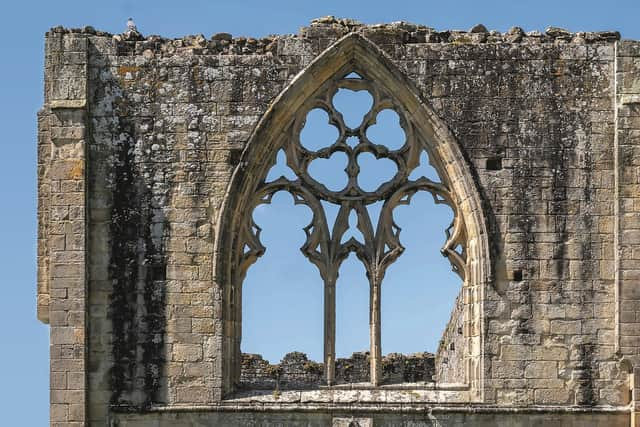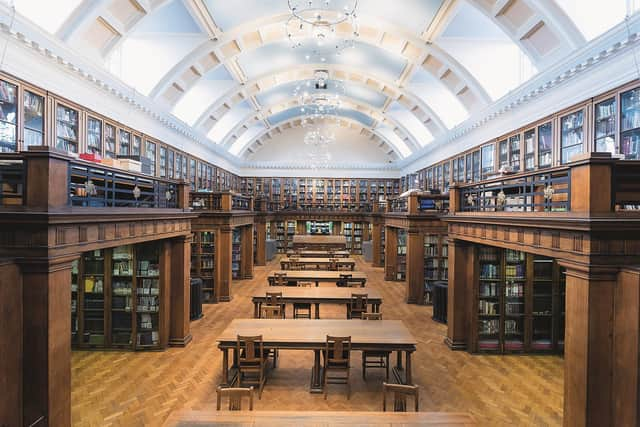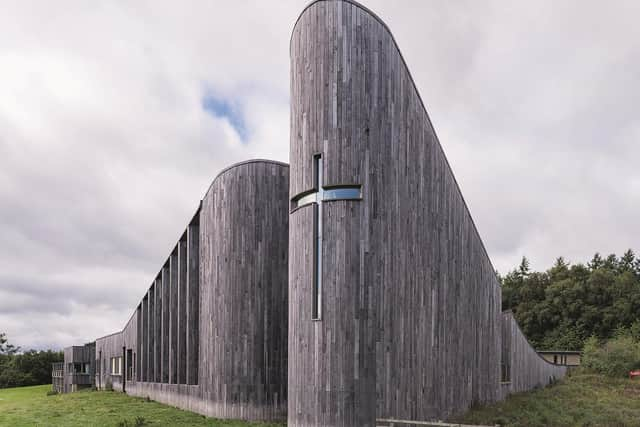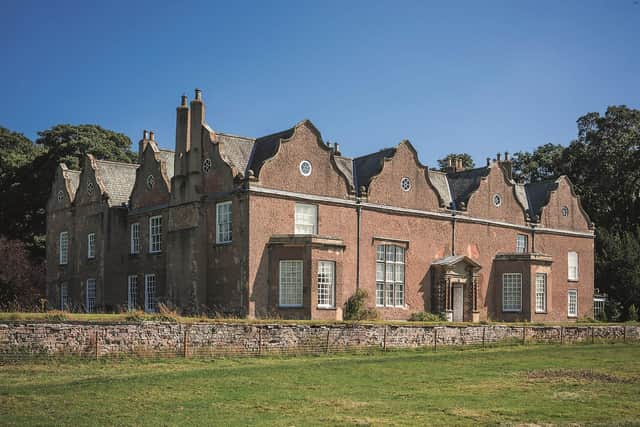Long awaited update to Pevsner's guide to the North Riding of Yorkshire is thanks to Jane Grenville who gave it her all
Nikolaus Pevsner, born in Leipzig to a father of Russian Jewish heritage, fled to England in the 1930s to escape Nazism after Hitler’s regime stripped him of his job at Göttingen University citing his paternal genes as the reason.
It turned out to be a wise move and one that Britain and some of its most remarkable buildings have benefited greatly from.
Advertisement
Hide AdAdvertisement
Hide AdAfter settling in London with his wife Lola and their three children, Pevsner, an intellectual with a remarkable memory, worked as an art historian and later taught at universities including Oxford and Cambridge.


What surprised him was that architectural history was a largely untapped area of academia in the UK.
In an effort to rectify that and with the intention of helping inform both locals and visitors, he came up with the idea of a series of architectural guides to the British Isles, documenting the buildings worthy of mention.
Allen Lane, founder of Penguin Books, put his verve and money behind it, and work began on the Buildings of England in 1947 with 46 volumes published by 1974.
Advertisement
Hide AdAdvertisement
Hide AdPevsner had two part time research assistants and a secretary who prepared notes on the historic counties of England and their notable buildings and in the Easter and Summer university holidays he, driven by his wife Lola, would go and see them for himself, while adding other finds.


Great country houses and cathedrals starred but so too did churches, farmhouses and more humble buildings, some of which only survive to this day thanks to the Pevsner Guides highlighting their architectural merit.
Pevsner knew there would be omissions and errors in his books and it was he who insisted that there be revisions and additions. He invited readers to write in with corrections and suggestions, which they duly did.
Over the years most of his guides have been updated. A glaring exception was Yorkshire’s vast North Riding.
Advertisement
Hide AdAdvertisement
Hide AdThe guide, published in 1966, had never been altered save for a second printing with a few corrections.


Yale University Press, which now owns the rights to the books, commissioned Dr Jane Grenville for the job of correcting and adding to a new edition of the guide, which covers an enormous area from the edge of York to the East coast and up to the borders of County Durham and Cumbria.
That she was the best person for the task is indisputable, not least because it required a first rate mind, determination plus time and energy.
A former head of department in archaeology and deputy vice-chancellor at the University of York, she had been collecting Pevsner guides since she was an undergraduate.
Advertisement
Hide AdAdvertisement
Hide AdThe new revised North Riding guide took the best part of six years and she has no regrets.


The work and her travels were a distraction from the grief of losing her partner who had passed away in the early stages of Jane’s research. It helped, just as it had helped Pevsner when his wife passed away in 1963.
One of Jane’s first tasks was looking through the boxes of old letters to Penguin with corrections and suggestions re the original book.
She says: “They included missives from a Mr Butler from Calverley with lots of corrections. That was very helpful.”
Advertisement
Hide AdAdvertisement
Hide AdShe then set off to look at the buildings mentioned in Pevsner’s guide to check his information before altering and adding where needed.
“Redoing the Castle Howard entry was the biggest project as it has been well studied since Pevsner wrote the original book,” says Jane who, like Nikolaus, recruited friends to drive her to various locations.
She travelled in style thanks to former estate agent and co-author of The Lost Houses and the North Riding, Edward Waterson who owns a 1955 vintage Rolls Royce. He and other drivers are credited in the book.
The Rolls, Edward’s charm and connections helped Jane gain access to places where Pevsner wouldn’t have got over the threshold due to prejudice.
Advertisement
Hide AdAdvertisement
Hide AdOne of the greatest surprises was Middlesbrough, which she had never visited before.
“I was astounded by the buildings and the remarkable people who live there.
“I’d got there at 6am dressed in a Barbour and with a camera looking like a middle class nerd when four burly men with scary dogs came toward me on a deserted street.
“I was very wary but we had a lovely chat about photography and what I was doing and it just summed Middlesbrough up for me.”
Advertisement
Hide AdAdvertisement
Hide AdShe greatly expanded on Pevsner’s entries on the Town Hall, which she says rivals Manchester’s, and on Middlesbrough central library which she says rivals Manchester’s.
Not all the buildings and structures Jane has added are old. One of her favourites is Stanbrook Abbey near Ampleforth, which dates to 2015.
Her favourite house is Norton Conyers, near Ripon, and she says: “The layers of history there are incredible from the Anglo Saxon period onwards. It’s like a Russian doll.”
The revised Pevsner Guide to the North Riding with photographs by Jonathan Pow is £45 but will rise to £60 in late April. Visit www.yalebooks.co.uk
Advertisement
Hide AdAdvertisement
Hide AdJane’s talk on her Pevsner odyssey is on YouTube. She would like to see all Pevsner guides digitised so further corrections and additions can be done immediately. She would also like to see the guides as an APP that people can take with them on walks.